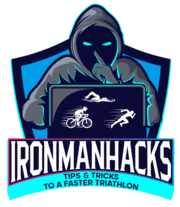You may have read #17 (Get IF and VI right), from Joe Friel, the man who wrote the book on triathlon and power meters.
Somewhere I read that using a power meter is like cheating. Except it isn’t.
A power meter, in case you don’t know, allows you to optimise your energy exertion. If you get it right, you finish the bike at your fastest time possible without compromising your run. Any faster, and you will have hurt your chances to do your best run; any slower and…well, you would have been slower.
Power meters used to be expensive and touchy. Hard to set up, adjust, calibrate, and maintain. But now they are much more affordable and stable.
You can get power meters in your pedals, cranks, chainrings, or hubs. Some record the power of both legs individually (L+R pedals or cranks), and some record both combined (chainrings or hubs).
Some are easily transferable between bikes (pedals or wheels) and some are more fixed. Some have their own head units, and some work with any Garmin or Wahoo.
There’s no one best power meter, as we all have different needs and budgets. The best thing to do is research them yourself on DC Rainmaker’s site. He’s done all the hard research and testing for us so we don’t have to.
Then, once you have a power meter, make sure you know how to use it. There’s not point just staring at a number and not knowing what to do with it. The best approach is to read all about it yourself, so you know the fundamentals.
If you have a good coach, he or she will then give you appropriate workouts to optimize your performance and potential. The power meter is the foundation for measuring your bike performance, and your coach will adjust your workouts to ensure you progress.
Personally, I’d say a power meter upgrade is the single biggest thing you can do to become faster – even more than buying a new wheelset or bike.
